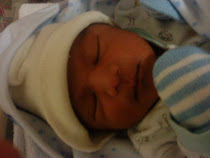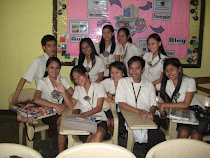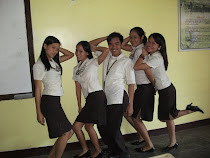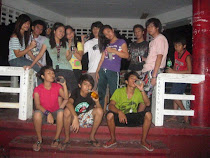President Noynoy Aquino’s first State of the Nation Address (SONA)
President Noynoy Aquino will be giving his first State of the Nation Address (SONA) soon. If his army of speechwriters will have their way, his speech will be all about giving people “hope”. Hopefully, it will not be full of motherhood statements similar to his election platform and inauguration speech. Heaven forbid that Conrado de Quiros have his way in writing it lest it be full of allusions to myths and legends again, and nothing of real substance. One thing is for sure; P.Noy’s first SONA will be filled with what he will refer to as a list of the former administration’s “faults.”

P.Noynoy Aquino will have another opportunity to lambast the former administration and to stress that he is “not superman” and that he “hopes that the Filipino people will have ‘reasonable’ expectations of him” or something to that effect or anything to lower peoples’ expectation of his performance for the next six years. We’ve heard it all before, but we’re crossing our fingers this time that he will give enough details in his speech to give AntiPinoy.com and his other critics, something they can sink their teeth into.
If dealing in real estate is all about “location, location and location”, in government addressing the country’s problems should be first and foremost all about the “economy, economy, and economy.” As economic expert Winnie Monsod had warned: “The President must be specific in his budget message during the SONA so that both houses of Congress can clearly understand what government plans to undertake annually for realizing such agenda.” For his part, blogger Benign0 also offers key performance measures for evaluating how successful the President is in meeting his corruption eradication promises. Obviously, people are waiting for P.Noy to speak clearly and realistically about how he is going to tackle the economy. Unfortunately for P.Noy, there is no way he can wing it this time.
Why should P.Noy prioritize the economy? P.Noy has to prioritize the economy because the economy affects everything. Those who challenge the President to look into their causes like the environment, the Mindanao peace deal, human rights abuses, etcetera, etcetera, need to wait until the economy has picked up before the administration can even begin to start drawing something on the drawing board.
Those groups who want P.Noy to look into the environment and climate change should not hold their breath because achieving an economic boom does not go hand in hand with being environmentally friendly. It’s sad, but that’s reality. It just “ain’t gonna happen” under P.Noy’s watch. Why do you think some countries like the United States and Australia haven’t signed the Kyoto Protocol until now? It’s because signing it means that their economies will be compromised.
This is precisely the reason why talks about the environment in G-20 summits keep getting stalled because not all industrial countries like China and India are prepared to reduce their green house gas (GHG) emissions. For many of them, it is because they feel it is unfair to emerging economies to come to an agreement to prevent further damage to the environment when countries like the US and the UK have achieved their economic prosperity without signing up to such in the past. Although it all sounds very greedy, economic stability is also vital to achieving cultural stability. Only when people have moved on from the struggle of providing for the most basic needs such as food, shelter and clothing and enjoy “luxuries” such as education and recreation can people think about the environment. And this situation can only be achieved through prioritizing the economy.
Looking at the big picture
P.Noy has to look at the big picture and not just Gloria Arroyo’s picture to delete vengeance from his agenda. So many times before P.Noy has been quoted criticizing former president Gloria Arroyo for overspending, something he claims resulted in a P340 billion budget deficit. It should be stressed here that the huge spending done by the former administration was not all for travels and huge dinners. As Senator Edgar Angara said, expensive dinners and too many travel entourages notwithstanding, if former president Arroyo did not pump-prime the economy, it would have contracted like other European nations did. To quote:
Angara, the chair of the Senate finance committee, does not see the country going bankrupt after Ms Arroyo leaves office next week.
The deficit was still “manageable,” he said, noting that a deficit of 3.45 percent of GDP or gross domestic product (P340 billion) was “sustainable.”
Some European economies had contracted because the ratio of their budget deficits to GDP ranged from 12 to 14 percent, he said.
“The deficit is part and parcel of public finance management. If the economy grows, the deficit and debt will lessen proportionately,” he said.
Angara said that the country would not have achieved a 7.3-percent growth in the first quarter if Ms Arroyo did not spend that much.
Ms Arroyo has described this as pump-priming the economy.
“If she did not pump-prime, the economy could have contracted,” Angara said.
The deficit that Escudero is going on about might be the biggest but “it was also the biggest economy ever,” said Angara.
In the second quarter of 2007, the economy posted at 7.5 percent the fastest annual growth in 20 years, the highest since the 7.7 percent in the third quarter of 1986, the year the dictator Ferdinand Marcos was overthrown. The economy finished 2007 with a 7.3-percent growth.
Despite Senator Angara’s acknowledgment however, I’m pretty sure that P.Noy will highlight the huge deficit mentioned above in his first SONA as more of a burden passed on to him. But to put things in perspective, the United States of America is in danger of sliding back into another recession despite a brief rebound after the first recession, this even after spending almost $862 billion to stimulate the economy. Doomsday sayers are predicting that the US could be headed for “a terrifying reprise of 1937 when the US economy fighting its way out of the Great Depression crashed a second time ” according to TIME magazine.
The difference between P.Noy and US President Obama is that, Obama does not go around every other minute harping about how it was all George W. Bush’s fault. In contrast, it is a safe bet that P.Noy will keep blaming GMA for all the ills of the country up until the last few days of his term. Never mind that his own late mother, former President Corazon Aquino is responsible for the 1987 constitution which is part of the reason why the economy can’t compete with the international market. Come to think of it, Filipinos hardly ever heard former President Arroyo complain about past administrations, which includes again Cory Aquino and her own Administration’s poor economic track record, for all the ills of the land.
It has been reported that some of the leading economists in the US are even recommending adding another $150 billion in stimulus spending just to keep the threat of “double-dip” recession at bay. But most US voters are already of the opinion that the first stimulus spending did not work so there is a growing discontented group questioning the proposed additional spending because of the rising budget deficit. To put it simply, ordinary folks do not trust the US government to handle the economy this time.
While Obama is worried about the voters who don’t understand the long- established economic theory of John Maynard Keynes on stimulus spending, P.Noy critics hope that the head of the Philippines (who should be more knowledgeable than the average schmoe) can understand why there was a need for former President Arroyo to spend and ward off the effects of the recession that gripped the rest of the world in the last quarter of 2008.
But we can’t really expect P.Noy to acknowledge anything good that “evil” Gloria has done during her term. To do that would be like dishonoring the promise he gave to his supporters and that is, to prosecute GMA and her cohorts at all cost. Good luck to him then and the rest of the public who will have to endure six years of another Aquino administration devoted to “witch hunt.”
Hard Act to Follow
Like it or not, P.Noy has to admit that the accomplishments of GMA will be a hard act to follow. Apart from the fact that she did what she had to do with little regard for what her detractors said, she also had the luxury of implementing her policies for nine years instead of six. This meant that there was a bit of continuity on the projects that she started. Her last SONA in 2009 stated this:
Had we listened to the critics of those policies, had we not braced ourselves for the crisis that came, had we taken the easy road much preferred by politicians eyeing elections, this country would be flat on its back. It would take twice the effort just to get it back again on its feet—to where we are now because we took the responsibility and paid the political price of doing the right thing. For standing with me and doing the right thing, thank you, Congress…
The strong, bitter and unpopular revenue measures of the past few years have spared our country the worst of the global financial shocks. They gave us the resources to stimulate the economy. Nabigyan nila ang pinakamalaking pagtaas ng IRA ng mga LGU na P40 billion itong taon, imparting strength throughout the country and at every level of government…
Compared to the past, we have built more and better infrastructure, including those started by others but left unfinished. The Subic-Clark-Tarlac Expressway is a prime example of building better roads. It creates wealth as the flagship of the Subic-Clark corridor.
We have built airports of international standard, upgraded domestic airports, built seaports and the RORO system. I ask Congress for a Philippine Transport Security Authority Law….
Some say that after this SONA, it will be all politics. Sorry, but there’s more work….
Sa telecommunications naman, inatasan ko ang Telecommunications Commission na kumilos na tungkol sa mga sumbong na dropped calls at mga nawawalang load sa cellphone. We need to amend the Commonwealth-era Public Service Law. And we need to do it now….
Kung noong nakaraan, lumakas ang electronics, today we are creating wealth by developing the BPO and tourism sectors as additional engines of growth. Electronics and other manufactured exports rise and fall in accordance with the state of the world economy. But BPO remains resilient. With earnings of $6 billion and employment of 600,000, the BPO phenomenon speaks eloquently of our competitiveness and productivity. Let us have a Department of ICT….
In the last four years tourism almost doubled. It is now a $5 billion industry…
Our reforms gave us the resources to protect our people, our financial system and our economy from the worst of shocks that the best in the west failed to anticipate….
They gave us the resources to do reforms para palawakin ang suportang panlipunan and enhance spending power….For helping e raise salaries through joint resolution, thank you Congress.
Cash handouts give the most immediate relief and produce the widest stimulating effect. Nakikinabang ang 700,000 na pinakamahihirap na pamilya sa programang Pantawid Pamilya.
Our preference is to invest in projects with the same stimulus effects but also with long-term contributions to national progress….
Sa pagpapamahagi ng milyun-milyong ektaryang lupa, 700,000 na katutubo at mahigit isang milyong benepisyaryo ng CARP ay taas-noong may-ari na ng sariling lupa. Hinihiling ko sa Kongreso na ipasa agad ang pagpapalawig ng CARP, at dapat ma-condone ang P42 billion na land reform liabilities dahil 18% lamang ang nabayaran mula 1972. Napapanahon dahil it will unfreeze the rural property market. Ang mahal kong ama ang nag-emancipate ng mga magsasaka. Ii-mancipate naman natin ngayon ang titulo….
Nakinabang ang pitong milyong entrepreneurs sa P165 billion na microfinance. Nakinabang ang 1,000 sa economic resiliency plan. Kasama natin ngayon ang isa sa kanila, si Gigi Gabiola. Dating household service worker sa Dubai, ngayon siya ay nagtatrabaho sa DOLE. Good luck, Gigi…
Nakinabang ang isang milyong pamilya sa programang pabahay at palupa, mula sa PAG-IBIG, NHA, community mortgage program, certificates of lot awards, at saka yung inyong Loan Condonation and Restructuring Act….
Whether you believe her statements above or not, it has become hard for ordinary folks to believe that former President Arroyo did anything good. This is because the Philippine media were good at highlighting her inadequacies but played down every good intention that she had. Sadly, the media in the Philippines has never been balanced in reporting the good stuff that came out of Malacanang while GMA was still running the show. Filipinos just have to look outside of the Philippines to see that there were other nations whose economies were run to the ground by their administrators (think Greece) and you will appreciate the fact the GMA did a good job despite the odds.
P.Noy now has acquired so many options since he has taken on “the most difficult job in the land”. He can continue with what GMA has started in order to achieve continuity; or improve on the policies; or sit down with those who are clamoring for the change in the Constitution and discuss the merits of removing and replacing some parts that prevent our country from moving forward (think protectionism clauses); to change the system of government from a presidential to a parliamentary system, among other things.
The Philippines is P.Noy’s oyster. He has to prioritize the things that will benefit every citizen in the long term not just those who supported and financed his campaign. It would be too disappointing if P.Noy devotes most of his State of the Nation Address to the blame game. It is time for P.Noy to put his sleeves up and get his own hands dirty. He has to make up his mind about whether his administration will be about spending to stimulate the economy or about austerity if he prefers to have an image of (false) humility. He just has to be careful not to get stuck in analysis paralysis because of his preoccupation with maintaining an image of someone who is the opposite of the GMA. It’s just plain unproductive.
http://antipinoy.com/noynoy-sona/




























